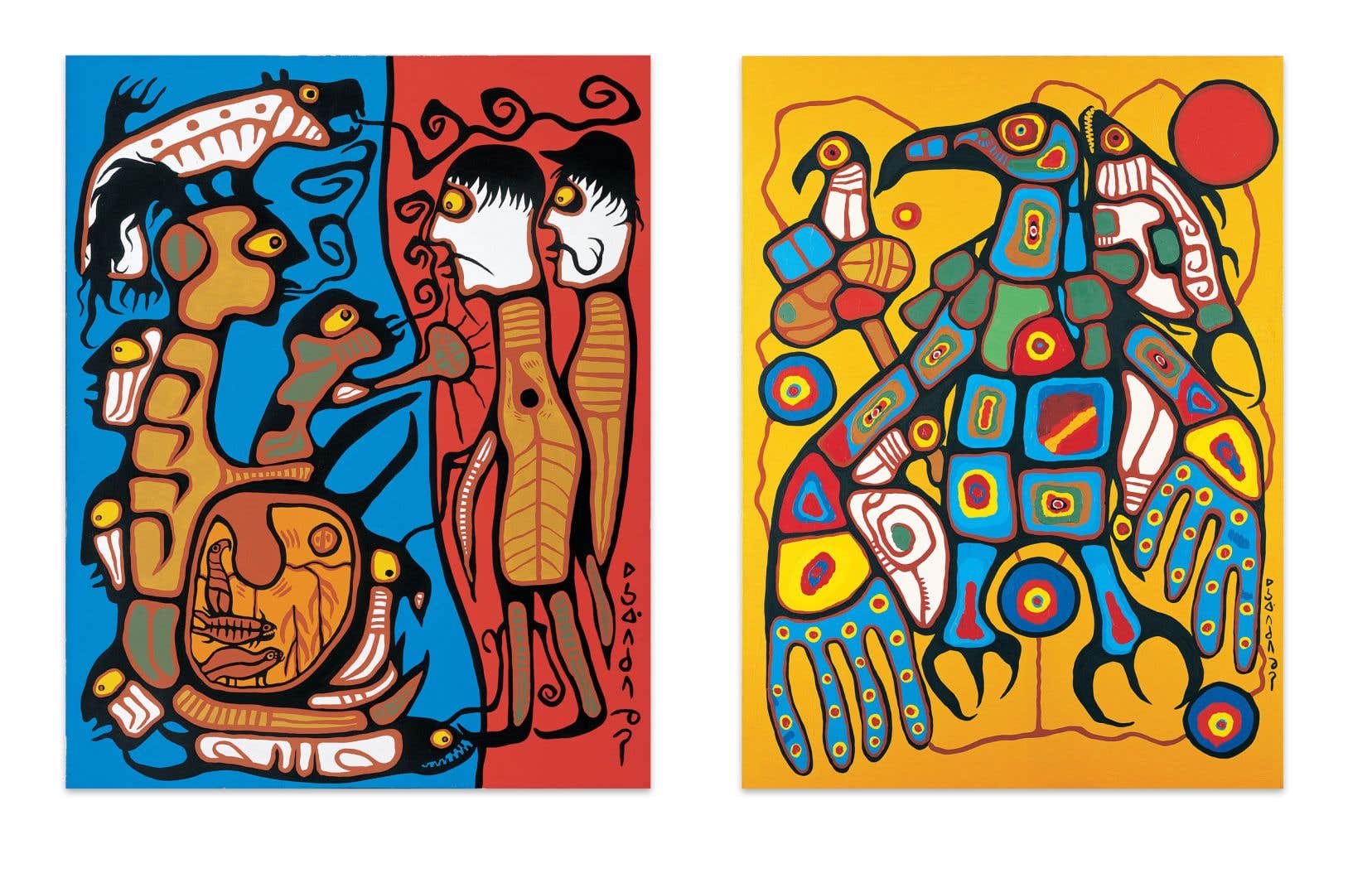It is the mother of all Canadian art frauds that has just been brought to light by a police investigation, after more than two and a half years of work. About 1,200 works (canvases and prints) imitating the style of Anishinaabe artist Norval Morrisseau (1931-2007) have been seized in Thunder Bay, Ontario, according to revelations made last week. The set is valued at over $100 million.
The traffic would have taken place over decades and would have involved three criminal groups who would have succeeded each other and who would have exchanged expertise to counterfeit works and issue certificates of authenticity reassuring collectors.
“The problem, most of the time, is that the police have few resources, little knowledge and little incentive to investigate this kind of crime, says Montreal lawyer François Le Moine, specialist in legal issues. Arts. It is not so much a question of rights as a question of means. That is why this Morrisseau case is good news. Investigating thousands of fakes for years is exceptional. »
The Ontario police think they will find between 4,500 and 6,000 fake Morrisseaus after their national and international hunt. “Me, I believe that it will be even more than 6000 works”, says Quebec lawyer Jonathan Sommer, involved professionally in the triggering event of the hunt for fakes. The catalog raisonné of the real canvases painted by Norval Morrisseau will eventually include around 5,000 entries. To this should be added lithographs, etchings and other works on paper.
The “painter of legends” of the Ojibwe Bingwi First Nation Nyaashi Anishinaabek is the founder of the Woodlands school, drawn to the representation of spiritual and mythological traditions. A survivor of residential schools for Aboriginal people, he is considered one of the main founders of contemporary Aboriginal art in Canada. Very prolific, he did not keep a register of his creations, which facilitates the work of fraudsters all the more.
Jonathan Sommer was approached fifteen years ago to defend the cause of Kevin Hearn, a member of the Barenaked Ladies group, who wanted to have the inauthenticity of Morrisseau’s great diptych recognized. Spirit Energy of Mother Earth bought in a chic Toronto gallery around 2004. The pot of roses of the fraud had been revealed by the experts of the Art Gallery of Ontario, which had borrowed the work for an exhibition in 2010.
“I worked mainly pro bono on this file, for five or six years, almost every day,” says the lawyer who lives in Estrie, but who has been practicing law in Ontario for decades. Mr. Sommer specializes in commercial law, but comes from an artistic family: his father is the poet Richard Sommer, and his mother, the performer Vicki Tansey.
A triggering documentary
A court of first instance concluded that it could not decide on the award of Spirit Energy of Mother Earth. The Court of Appeal then forced the gallery to pay $60,000 to the buyer, without having decided on the authenticity of the work.
The documentary There Are No Fakes, by filmmaker Jamie Kastner, followed this rather unique cause and exposed the extent of the network of people and companies involved in fraud and victims of organized larceny. “The police contacted us because they were interested in a murder committed in the 1980s which is the subject of the film, says Jonathan Sommer. This approach did not succeed, but the police returned to the charge to take an interest in artistic fraud. I had requested this intervention in vain for years. »
The Aboriginal origin of Norval Morrisseau could partly explain the slowness of institutions to take an interest in his massive plagiarism. “Absolutely,” said Mr.e Sommer. Norval Morrisseau is recognized on the one hand as an immense artist. On the other hand, he is sometimes reduced to a stereotype of the stupid Native, unable to keep reliable records of what he produces because he has drunk too much. »
The major investigation is arguably the largest in the nation’s history of art fraud. Launched in 2019 by the Thunder Bay police, it quickly sought the assistance of the Ontario Provincial Police, given the scale and extent of the fraud. The FBI was also contacted.
The problem, most of the time, is that the police have few resources, little knowledge and little incentive to investigate this kind of crime.
Police forces have arrested eight individuals involved in the fake trafficking network, including Benjamin Paul Morrisseau, the artist’s nephew. Three groups have taken turns since 1996 for the production of fakes, including forging exhibition certificates. In total, the band faces about forty charges, including production of forgery and intent to defraud the public.
The forgeries seized come from private and institutional collections. The police identified them with the help of authentication experts. The investigation was described as “very difficult” by Detective Kevin Veilleux, who was leading it.
Me Le Moine explains that in Canada, connoisseurs are not sufficiently protected and risk being prosecuted when they speak out. “Dealers will also have to be a little more responsible for the provenance and authenticity of the works they put on the market,” he says, adding that it is very difficult to sue a gallery that has sold a fake.
Me Sommer, who has been harassed by the counterfeiters, himself has more than 20 fakes that Ontario police have examined. Investigators are now appealing to the owners of alleged works by Norval Morrisseau to have them authenticated. On the other hand, the real ones should increase in value with the purification of the catalog of fakes and copies.
